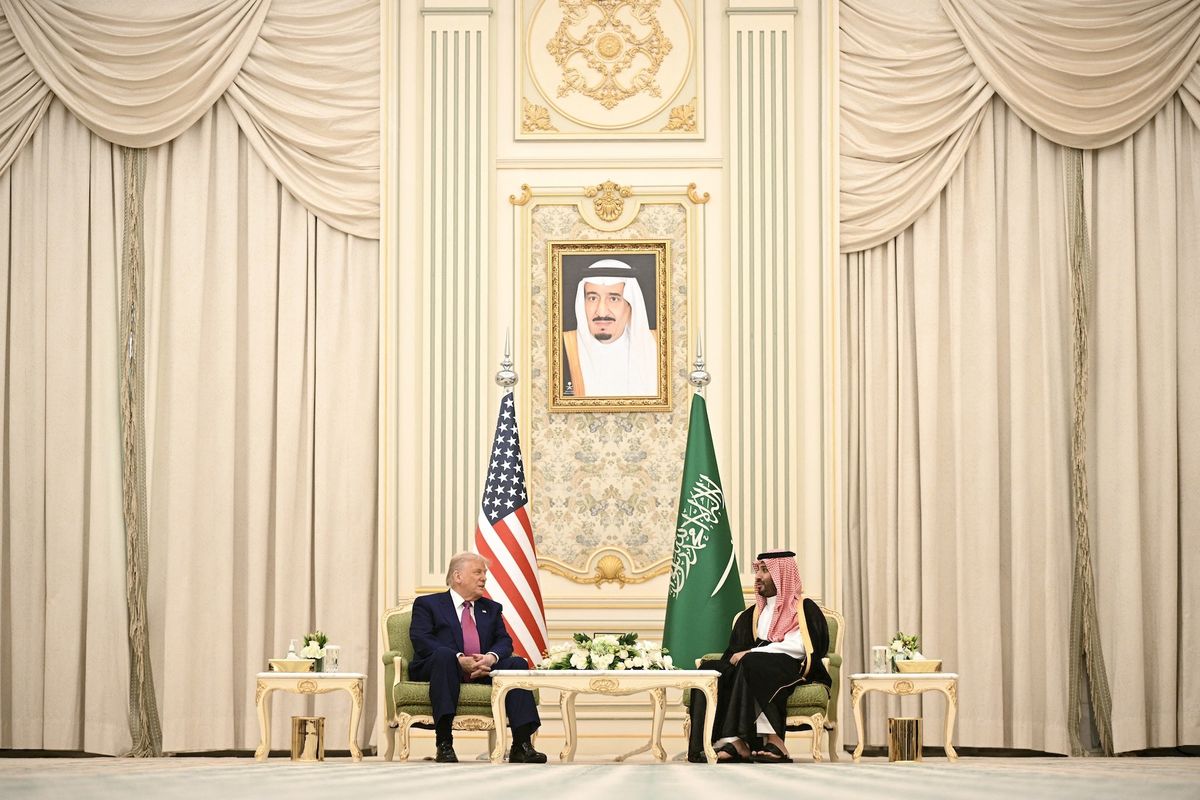OPINION — President Donald Trump’s recent threat to withdraw from the 1987 Intermediate-Range Nuclear Forces Treaty (INF) provides another false justification for adding to a needless, nuclear arms race that is already underway.
Yes, the United States has a right to protest the fact that the Russians are breaking limitations written into the INF treaty, which eliminated U.S. and Soviet nuclear systems with ranges of between 310 and 3,420 miles. Moscow’s development and deployment of a new, nuclear-capable, land-based, cruise missile with that kind of range, known in this country as the SSC-8, does violate the treaty.
But this should not be a reason for the U.S. to seek to build its own new generation of land–based, intermediate-range nuclear systems. The U.S. Air Force and Navy already have, or are building, nuclear weapons of intermediate-range that can handle that job.
The Air Force has an air-launched, nuclear cruise missile and is in the process of producing a replacement for it that will have a longer range and probably stealth capability. The Trump administration has also provided funds for development of a new sea-launched, nuclear cruise missile, to replace one that was taken out of service in the 1990s. The U.S. already has too many nuclear weapons and does not need more.
Trump move to withdraw from INF actually makes it easier for Russian President Vladimir Putin to continue building up his own intermediate-range nuclear forces and at the same time, blaming the Americans for ending the INF treaty limitations. Putin even invented a cover story, claiming the U.S. has violated the INF Treaty by stationing the Aegis Ashore anti-missile system in Poland. The vertical launch system for the anti-missile interceptor is the same launch system used to fire the Tomahawk land-attack cruise missile from American destroyers. However, the Polish-based launcher is built to handle a defensive, anti-missile missile, and is not able to fire the offensive, Tomahawk attack missile.
Putin has wanted to break out of the INF limitations for over ten years. Back in 2007, Putin publicly discussed withdrawal from the INF Treaty, arguing it prevented him from meeting threats on his border posed by China, India, Pakistan and North Korea.
All of them possessed intermediate-range missiles and the first three had nuclear warheads for their missiles, while the fourth, North Korea, was trying to get there and by now, probably has.
The Obama administration opted to complain about Russia’s development of the banned weapons but did not threaten to withdraw from the pact.
Meanwhile, Trump’s implied threat seems rather empty — that the U.S. could build a new version of the nuclear weapons the George H.W. Bush administration dismantled under the terms of the INF treaty. Why spend billions of dollars for a land-based, intermediate-range ballistic missile or a ground-launched, cruise missile, when American air-launched and sub-launched nuclear weapons are - or will be - available? More than a year ago, Vice Chairman of the Joint Chiefs, Air Force Gen. Paul Selva, told the House Armed Services Committee that targets for American missiles at the intermediate-range “do not have to be ground based [systems].”
In addition, the U.S. is not only in the middle of a trillion-dollar replacement of all three of its nuclear delivery systems — subs, strategic bombers and ICBMs – but is also investing in development and research of a variety of potentially costly hypersonic and directed energy weapons.
Thanks to a growing U.S. deficit due to the Trump tax cut bill, and increased defense spending, the administration has quietly ordered all government agencies to cut five percent from future budget planning, starting with fiscal 2020. As a result, Deputy Defense Secretary Patrick Shanahan told reporters last Friday that the fiscal 2020 figure will be kept to $700 billion, instead of the $733 billion previously planned, and below fiscal 2019’s approved figure of $716 billion.
Meanwhile, under terms of the INF Treaty, to officially withdraw from the pact, the Trump administration must give six months notice to Russia, including “a statement of the extraordinary events the notifying party [the U.S.] regards as having jeopardized its supreme interests.”
If the Trump administration follows the treaty, which it may not, it should use those six months to discuss next steps with Putin in the U.S.-Russia nuclear relationship. Extension of the 2010 New START Treaty governing strategic nuclear weapons should be the number one topic. But as former Senator Sam Nunn (D-Ga.) and former Energy Secretary Ernest J. Moniz suggested on October 22, there is an opportunity to begin a promised “new dialogue on strategic stability focused on nuclear dangers.”
This may be asking too much of both Trump and Putin. But this country and the rest of the world would appreciate some sign of rationality from these two leaders in dealing with nuclear weapons, which, over seven decades, have served successfully as bargaining chips more than war fighting.
Find Other 'Fine Print' columns by Walter Pincus here...










